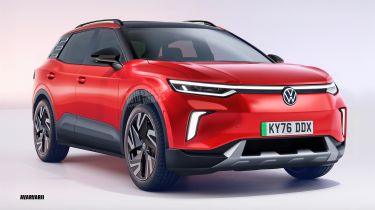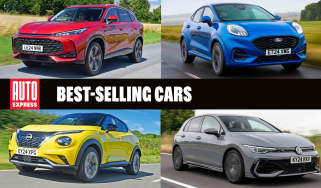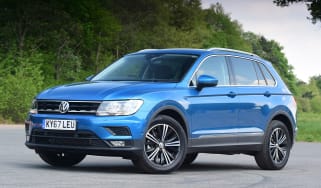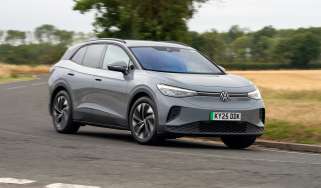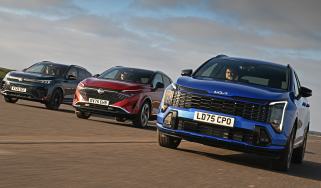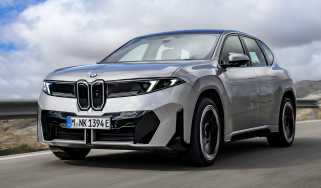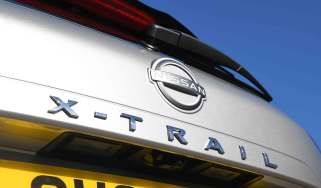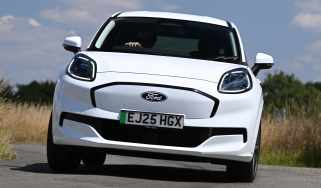Volkswagen ID. Tiguan: VW's ID.4 successor in detail
The Volkswagen ID.4 is set for a heavy update and a name change in 2026. Here’s everything we know so far
The Volkswagen ID.4 is getting a substantial upgrade in 2026, with the electric family SUV set to receive new battery tech, a brand-new look and even a new nameplate with the ID.4 morphing into the Volkswagen ID. Tiguan.
The Volkswagen ID.4 might have only been on sale for four years in its current guise, but earlier this year at the Munich Motor Show, CEO of Volkswagen Passenger Cars, Thomas Schäfer, told us that as one of “our major-selling vehicles” ID.4“has to be updated to [Volkswagen’s] new design language”, and describing the next-generation SUV as “a fantastic car”.
We are waiting for official details to be announced, but what we do know is that the Volkswagen ID. Tiguan will adopt Volkswagen’s MEB+ platform, as well as lithium phosphate batteries (LFP) which should help lower list prices for entry-level cars.
We don’t expect VW to announce prices for the new Volkswagen ID. Tiguan for a while yet, but as the new VW ID.4 is available from around £35,000 through the Auto Express Buy A Car service, we expect the ID. Tiguan to be priced around the same level.
Volkswagen ID.4 or Volkswagen ID. Tiguan?
Volkswagen has remained tight-lipped on what name its mid-size electric SUV will take, but there are strong hints that the ID.4 will be renamed as the Volkswagen ID. Tiguan.
When pressed at the Munich Motor Show on whether we would see the ID.4 reborn as the ID. Tiguan – following in the footsteps of the ID.2all, which will reach production later in 2025 as the ID. Polo – Schäfer smiled, shrugged and said: “That hasn’t been confirmed – that would be speculation.”
Yet in a separate interview, chief designer Andreas Mindt said: “In my opinion, you have to have names. The original Beetle was the Volkswagen 1200; it’s not a name. But the audience immediately gave it a name. These names are so human; you can humanise them – this is what we want to chase; this human element on a Volkswagen. I love it.”
Assuming that the ID.4 will be rebadged ID. Tiguan, the name isn’t the only part of the car which will be getting updated.
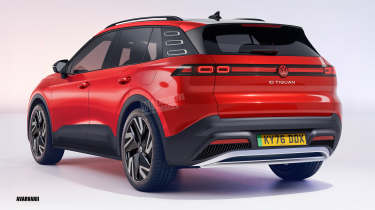
What will the Volkswagen ID. Tiguan look like?
Volkswagen is yet to give us a clue as to what the new Volkswagen ID. Tiguan will look like, but a Volkswagen spokesperson previously confirmed that ID. Tiguan will adopt a much cleaner, more swooping design compared to the current ID.4. With that in mind, our exclusive images preview how it could look.
We don’t expect the fundamental size and shape of the ID.4 to change, but we expect there to be greater parallels between the EV and the petrol and hybrid-powered Tiguan.
That means a similar front end with a neat light bar and sharp daytime running-light signature – possibly with the addition of an illuminated VW badge. Subtle differences, such as a cleaner lower section, should help signify the EV from its combustion counterpart, which gets a gaping air intake that spans the entire width of the front bumper.
To avoid too many unnecessary changes to the side panels, we expect the ID. Tiguan to inherit the ID.4’s heavy black cladding along the sills and wheelarches – a feature that’ll most likely stretch round to the back of the car, which like before, will find its number plate mounted within the bumper rather than the bootlid.
Here, we can see the new ID. Tiguan badge visualised for the first time too. Giving the EV a more modern look, it’ll sit beneath a much more progressive lighting signature and (another) illuminated badge.
All in, the ID. Tiguan should retain much of what made the ID.4 so successful, but in a more modern package.
What will the interior of the Volkswagen ID. Tiguan look like?
Alongside extensive exterior changes, we expect the new Volkswagen ID. Tiguan to take on a different look on the inside, as previously confirmed by a VW insider.
Recent updates on other VW models have included the return of physical buttons for things like the steering wheel and climate controls, moving away from touch-sensitive controls.
It’s likely that updates to the cabin will extend to its quality, too. Mindt admitted it was a point of consideration going forward, referencing the time and effort his team is putting into the forthcoming ID. Cross, which will sit below the Tiguan in the firm’s electric-car line-up.
Indeed, Mindt admitted that mistakes had been made with the most recent Volkswagen Golf: “Our satisfaction rating dropped down with the Golf Mk8, big time. The swiping things, you know, the touch sliders – it dropped down big time. So it’s that easy to improve this rating with this little thing.”
VW aims to work on increasing cabin quality and usability, as VW can’t afford to lose ground to its rivals.
The total number of changes for the new ID.4 will apparently be “like the change from Mk5 to Mk6 Golf”. Those two models used the same underpinnings, but the later edition was referred to as a new generation by Volkswagen.
What battery and powertrain options will be offered?
Specifics on battery and motor tech remain under wraps for now, but as things stand the Volkswagen ID.4 is currently offered with 52kWh and 77kWh batteries, and either a single-motor rear-wheel-drive layout or dual-motor all-wheel-drive set-up.
We understand that for ID. Tiguan that VW is set to move to LFP (lithium iron phosphate) technology, which, according to Schäfer, will be a “major step forward in terms of cost for [VW]”, hopefully helping lower list prices on entry versions of future ID. cars.
While LFP isn’t as energy dense as existing Nickel Manganese Cobalt (NMC) batteries used, VW will overcome this by cramming more cells into its cars using a new ‘cell-to-pack’ layout.
It’s probably unlikely that the new ID. Tiguan will feature the smallest 38kWh LFP battery available in the upcoming ID. Polo, but there’s nothing stopping the maker adding capacity to see the SUV hit 250 miles or more on a charge.
The layout uses no battery frame, three rows of prismatic cells side by side, and a cooling plate on top of the pack. As a result, the use of LFP batteries should help reduce costs.
For longer-range versions of the ID. Tiguan, it’s likely the VW will stick with NMC, allowing top-spec cars a range of around 350 miles – possibly nudging 400 miles on select versions. An energy-saving heat pump will remain optional.
How much will the new Volkswagen ID. Tiguan cost?
We don’t yet know how much the new Volkswagen ID. Tiguan will cost.
The current ID.4 costs from £36,995 and its main rivals like the Ford Explorer, Skoda Enyaq and Renault Scenic all come in under £40,000 - the new ID. Tiguan should be competitively priced.
Our dealer network has 1,000s of great value new cars in stock and available now right across the UK. Find your new car…
Find a car with the experts
